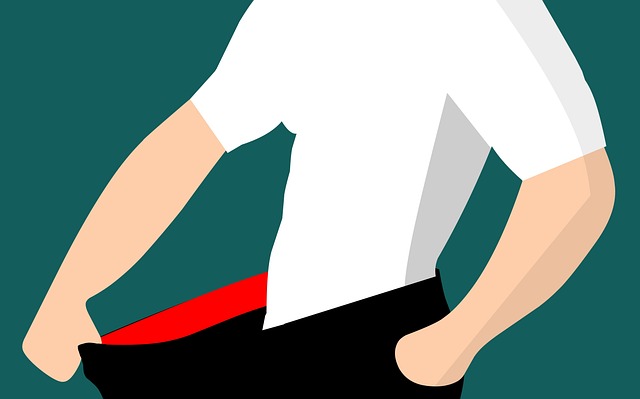Laser fat removal, or laser lipolysis, offers a non-invasive solution for targeted fat loss with minimal downtime. Using low-level lasers, this procedure precisely breaks down and dissolves fat cells, making it a safer alternative to surgery for body contouring. Ideal candidates have small to moderate subcutaneous fat and realistic expectations. The process involves a qualified healthcare provider assessing the individual's medical history, lifestyle, skin thickness, and body composition. Aftercare includes hydration, a healthy diet, and gentle care to optimize results and minimize risks like temporary redness, swelling, or discomfort. Future advancements in laser technology promise even safer and more effective targeted fat loss solutions.
“Discover the transformative power of laser fat removal treatments, a non-invasive body contouring solution that’s revolutionizing the beauty industry. This comprehensive guide explores targeted fat loss technologies, revealing how they work to melt away stubborn fat cells. From understanding the science behind it to navigating candidate selection and recovery, we break down the entire process.
Learn about the numerous benefits of this procedure, potential risks to be aware of, and what the future holds for effective, safe, and targeted fat loss treatments.”
Understanding Laser Fat Removal: How It Works

Laser fat removal, also known as laser lipolysis, is a non-invasive procedure that uses targeted lasers to break down and dissolve fat cells. This technology has revolutionized body contouring, offering a safer and more efficient alternative to traditional liposuction. Unlike other methods that focus on overall fat reduction, laser fat removal is designed to target specific areas for precise and localized fat loss.
The process involves the emission of low-level lasers into the targeted fat areas. These lasers penetrate the skin and are absorbed by fat cells, causing them to break down and release stored triglycerides. The body then naturally eliminates these released fats, resulting in a reduction in fat cell volume. This procedure is often pain-free, with minimal downtime, making it an attractive option for those seeking targeted fat loss without surgery.
Benefits of Targeted Fat Loss Treatments

Targeted fat loss treatments, often facilitated by laser technology, offer a non-invasive and effective way to reduce stubborn fat deposits. One of the key benefits is their precision; lasers can be directed specifically at adipose tissue, allowing for targeted destruction of fat cells without damaging surrounding areas. This results in noticeable improvements in body contouring and shape. Additionally, these treatments are minimally invasive, eliminating the need for incisions, anaesthesia, and lengthy recovery periods associated with traditional surgical procedures.
The process also promotes natural results over time as the body metabolises and eliminates the destroyed fat cells. Many patients appreciate the convenience of laser fat removal, as it can be performed in a healthcare professional’s office and typically requires no downtime. This makes it an attractive option for individuals seeking to achieve their ideal figure without drastic measures.
Candidate Selection for Laser Liposuction

Laser liposuction, or laser fat removal, is a popular non-invasive procedure for achieving targeted fat loss. Ideal candidates for this treatment are individuals who have small to moderate amounts of subcutaneous fat and want to reduce specific problem areas such as love handles, belly fat, or thigh fat. It’s crucial to note that while laser liposuction can be effective, it may not suit everyone.
During the consultation, a qualified healthcare provider will assess your medical history, current lifestyle, and body composition to determine if you’re an appropriate candidate. Factors like skin thickness, overall health, and realistic expectations play significant roles in candidate selection. In terms of targeted fat loss, understanding your body type and the distribution of fat can help guide treatment decisions, ensuring optimal results with minimal side effects.
The Procedure Step-by-Step

The Laser Fat Removal procedure involves a non-invasive approach to achieve targeted fat loss. It begins with a consultation where a healthcare professional assesses your medical history and determines if you’re a suitable candidate for the treatment. During the actual session, a laser device is positioned on the area to be treated, typically the abdomen, flanks, or thighs. The laser emits precise energy that penetrates deep into the fat tissue, heating it up and causing the fat cells to break down. This process stimulates the body’s natural metabolism, leading to targeted fat loss over time.
After the treatment, there is usually minimal downtime, and you may experience some temporary redness or mild discomfort in the treated area, which subsides quickly. It’s essential to follow post-treatment instructions, including staying hydrated and maintaining a healthy diet, to maximize results and ensure your body effectively eliminates the broken-down fat cells.
Recovery and Aftercare Tips

After a Laser Fat Removal treatment, it’s crucial to allow your body time to recover. The targeted fat loss process can leave some redness and swelling, which usually subside within a few days. Ice packs can help reduce inflammation and discomfort during this period. It’s important to stay hydrated by drinking plenty of water and avoid strenuous activities for the first 24-48 hours to ensure optimal healing.
Proper aftercare includes gentle care of the treated area, avoiding sun exposure without sunscreen, and following dietary recommendations from your healthcare provider. Eating a balanced diet with nutrient-rich foods can aid in the body’s natural recovery process. Remember, each person is unique, so listen to your body and contact your doctor if you have any concerns or notice persistent pain or unusual symptoms.
Potential Risks and Side Effects to Be Aware Of

Laser fat removal treatments, while promising targeted fat loss, come with potential risks and side effects that patients should be aware of before proceeding. The most common immediate side effect is temporary redness, swelling, or discomfort at the treatment site. These symptoms usually subside within a few days. In rare cases, skin irritation, changes in skin color, or even burns may occur, especially if the treatment is not administered correctly.
Long-term risks are generally low, but they do exist. These include potential damage to surrounding tissues, particularly when using high-intensity lasers. It’s crucial for patients to choose a qualified and experienced provider who uses approved laser technologies to minimize these risks. Regular follow-up appointments can help monitor any adverse reactions and ensure optimal results.
Exploring the Future of Non-Invasive Body Contouring

The future of non-invasive body contouring is looking bright with advancements in technology, particularly in laser fat removal treatments. These innovative procedures offer a promising alternative to traditional, more invasive methods. By focusing on targeted fat loss, lasers are capable of shrinking fat cells and reducing stubborn pockets of excess fat without surgery or downtime. This targeted approach not only helps individuals achieve their desired contour but also provides a safer and more comfortable option for those seeking body transformations.
With ongoing research and developments, the precision and effectiveness of laser treatments continue to improve. These advancements hold great potential for personalized, non-surgical body shaping, catering to diverse patient needs and preferences. As technology evolves, we can expect even more sophisticated solutions in the realm of non-invasive body contouring, further revolutionizing the way we achieve our beauty and wellness goals.
